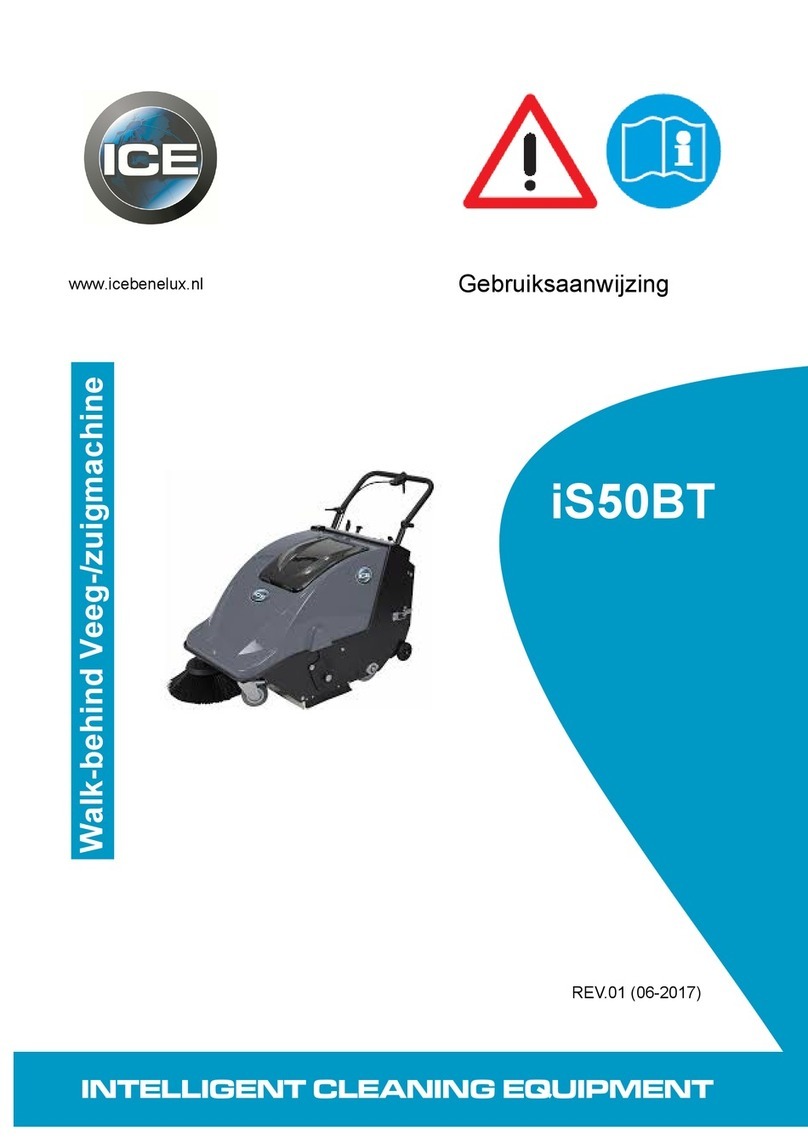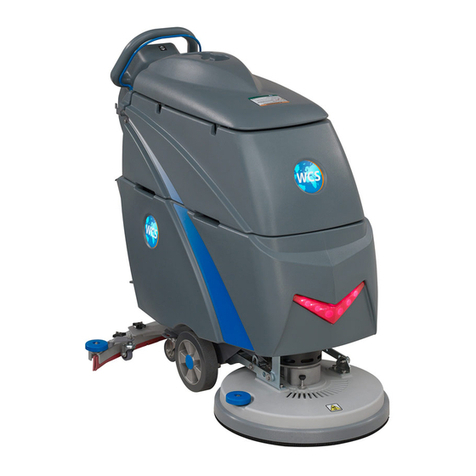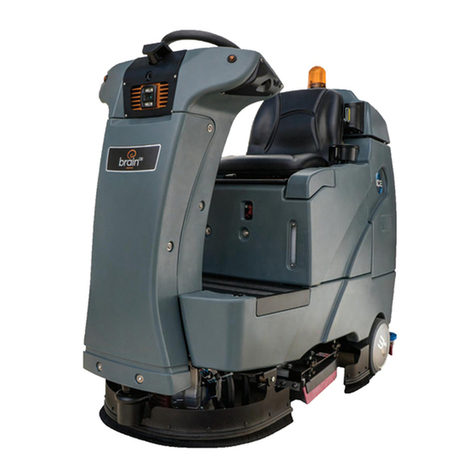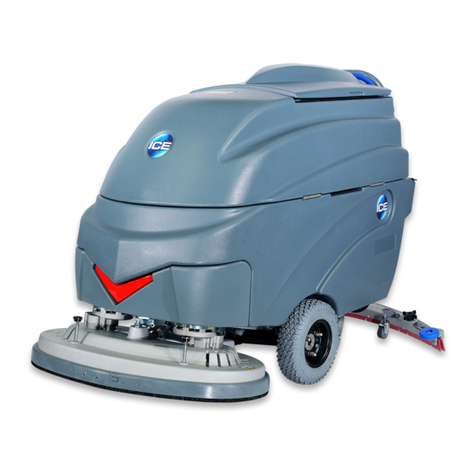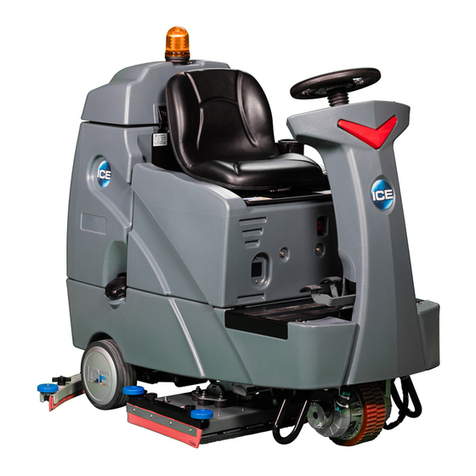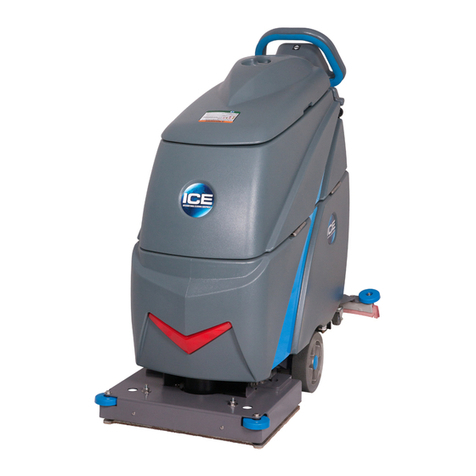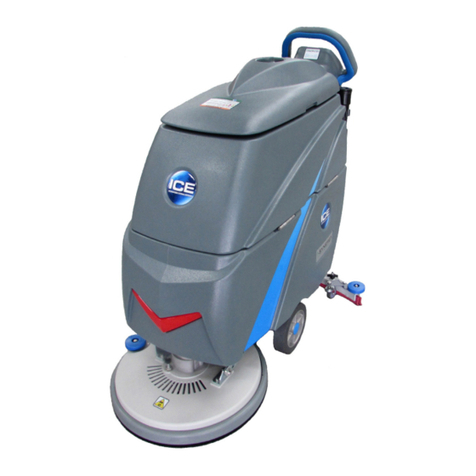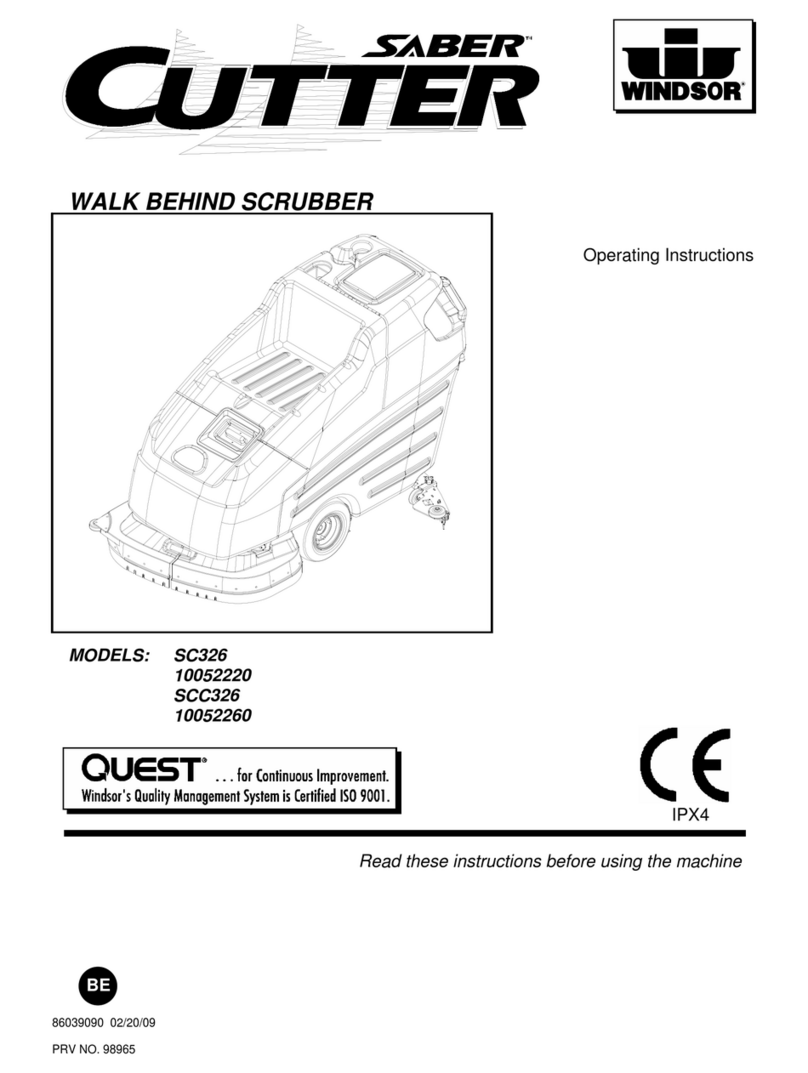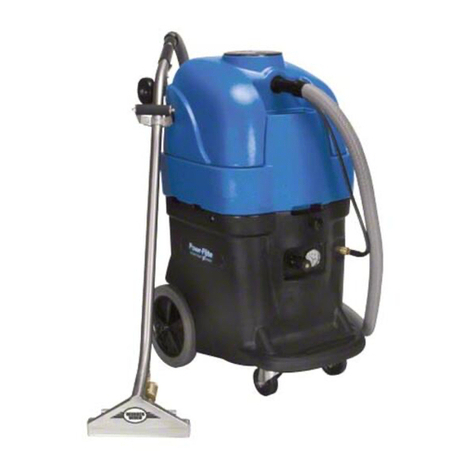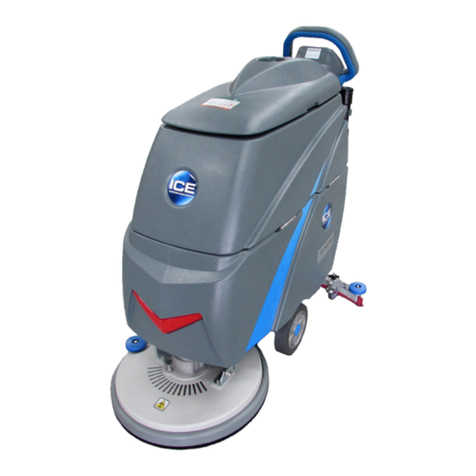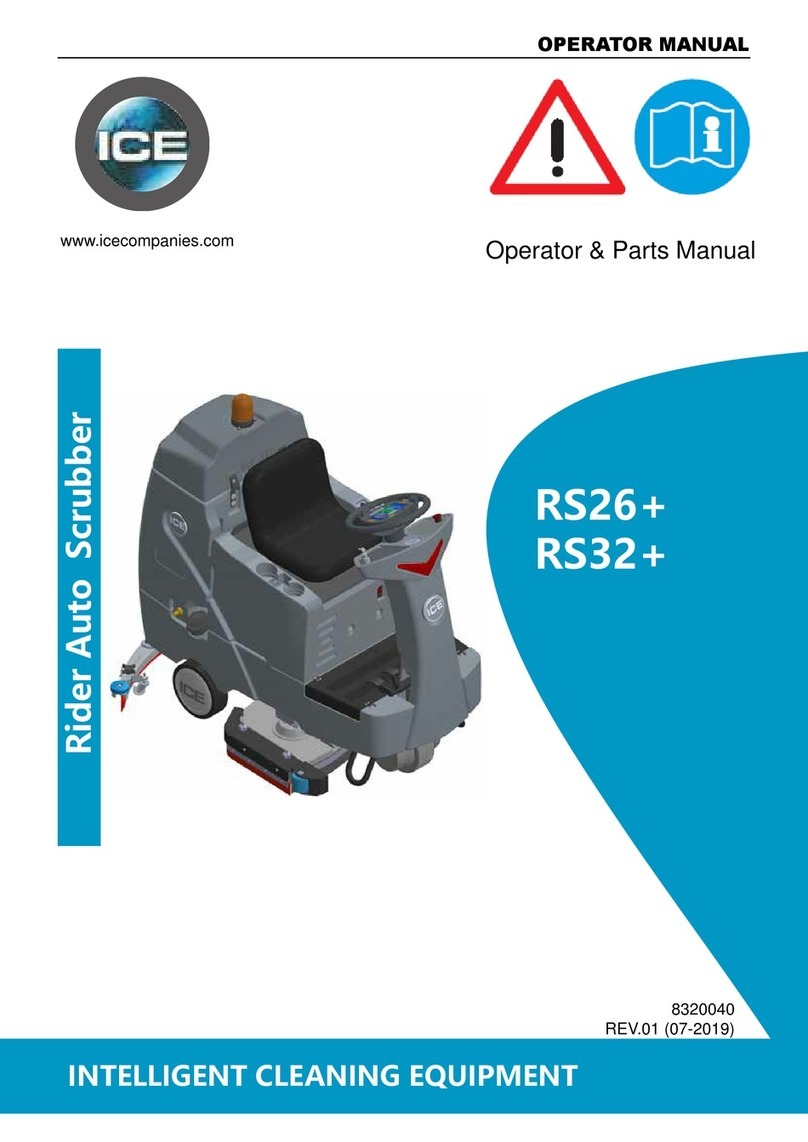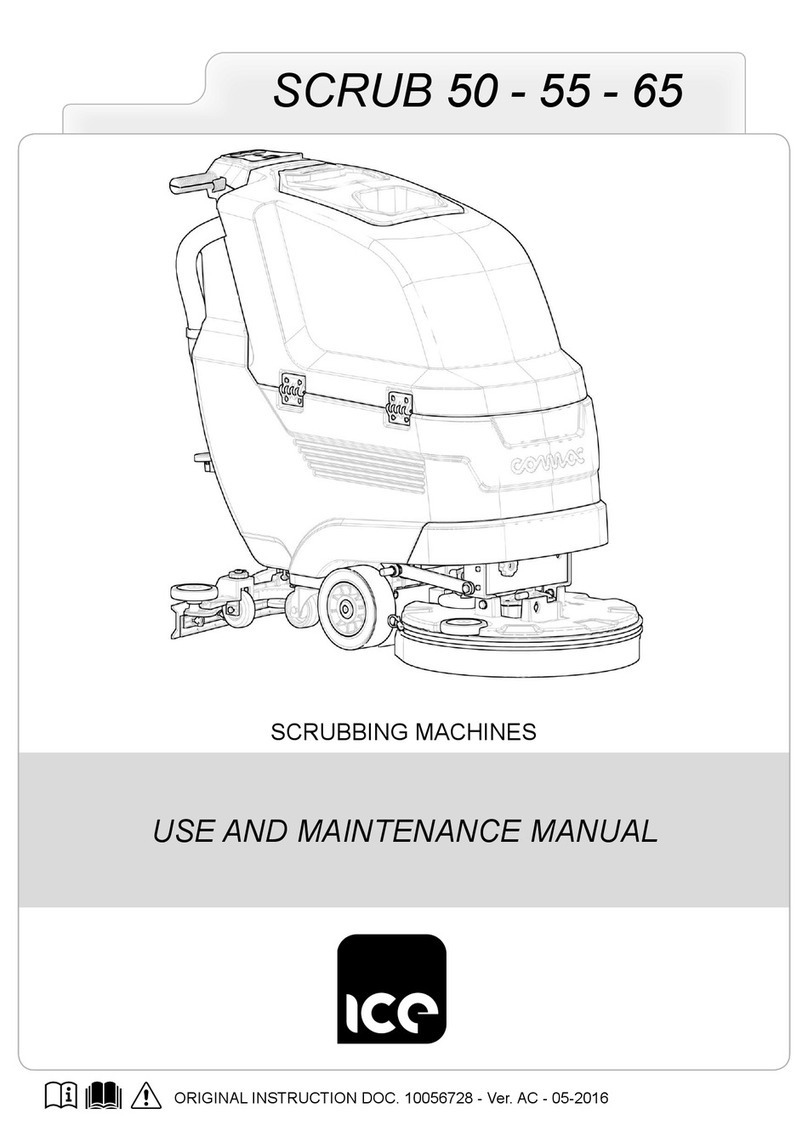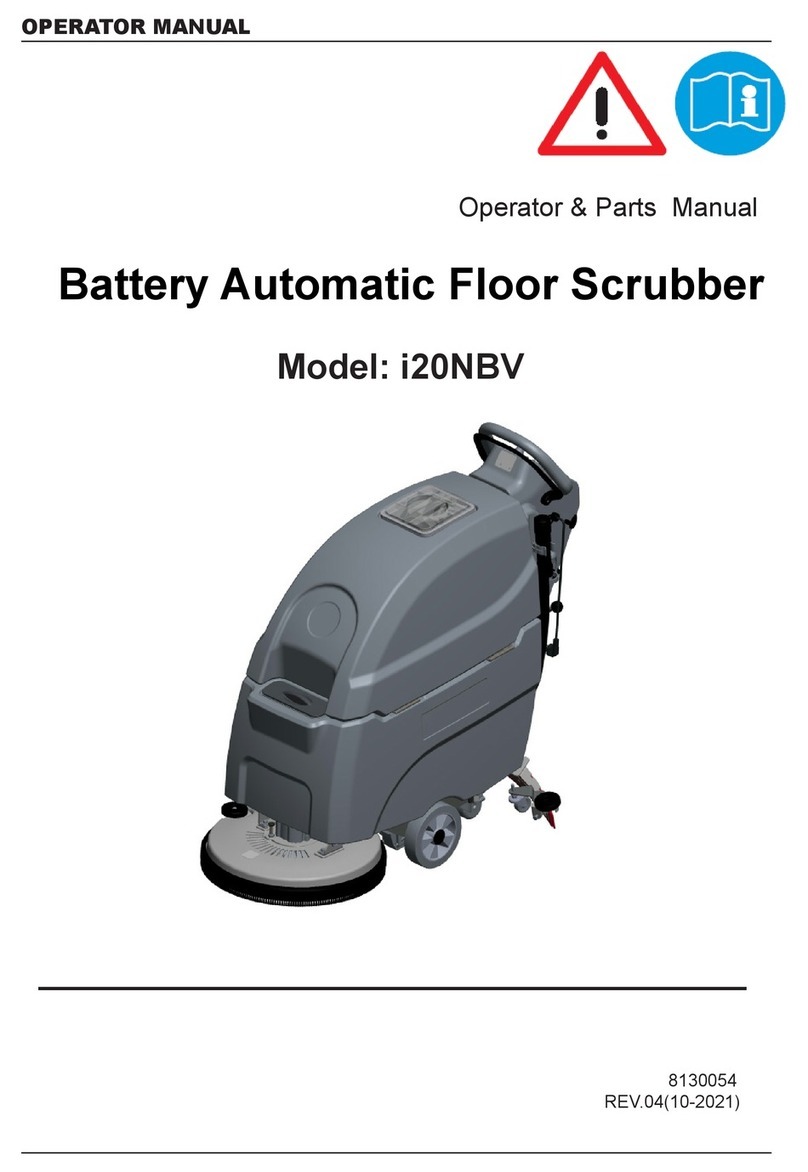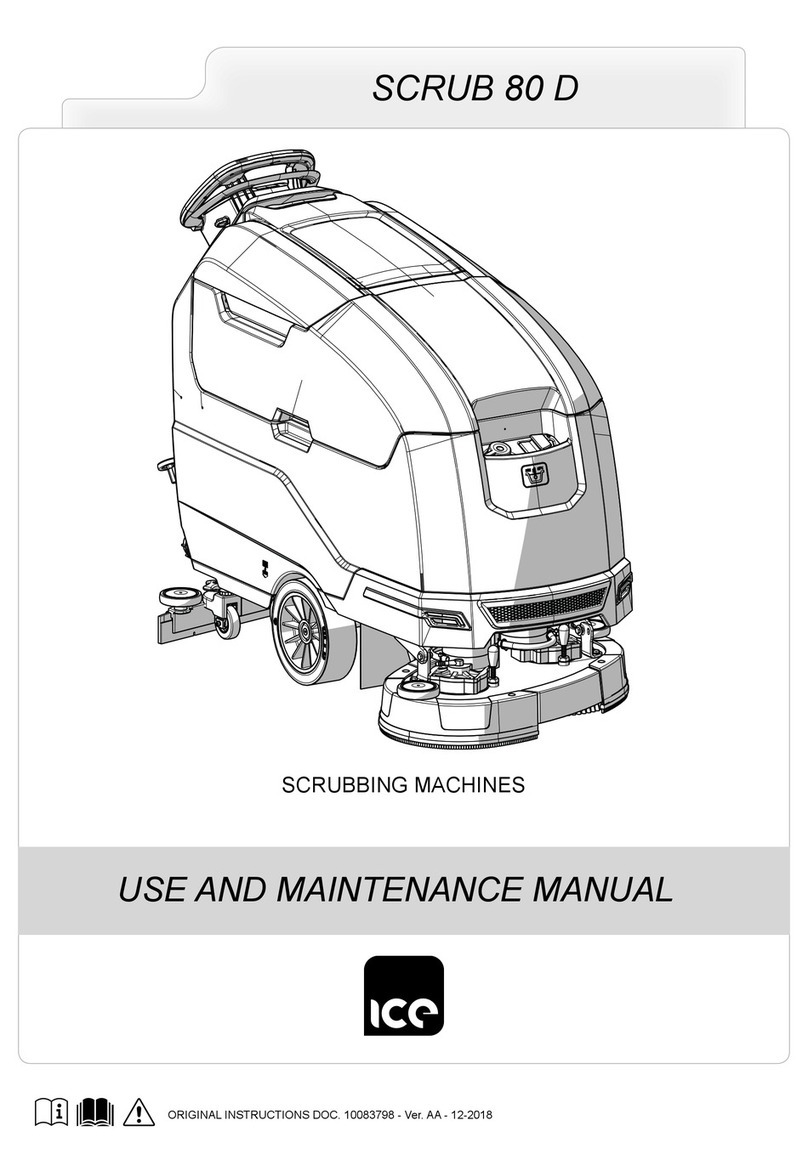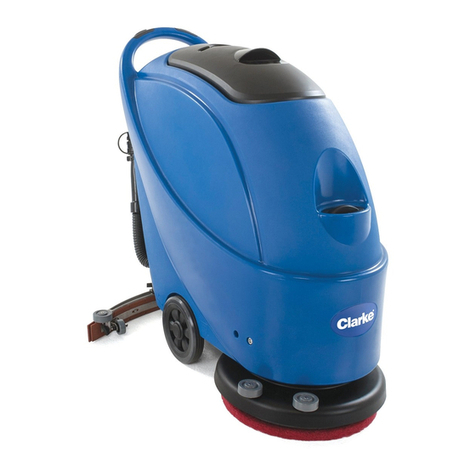
7
On consignment of the machine
When the machine is consigned to the customer, an immediate check
must be performed to ensure all the material mentioned in the shipping
documents has been received, and also to check the machine has not
suffered damage during transportation. If this is the case, the carrier must
ascertain the extent of the damage at once, informing our customer
service office. It is only by prompt action of this type that the missing
material can be obtained, and compensation for damage successfully
claimed.
Intended use
The floor scrubbing machine is designed exclusively for the professional
cleaning of surfaces and floors in industrial, commercial and public
environments. The machine is only suitable for use in closed - or at least
covered - locations.
The machine is not suitable for use in the rain, or under water jets. It is
FORBIDDEN to use the machine for picking up dangerous dusts or
inflammable liquids within places with a potentially explosive atmosphere.
In addition, it is not suitable as a means of transport for people or objects.
Introductory comment
The MTECH 70 D is a floor scrubbing machine which, by means of the
mechanical action of the rotating brush and the chemical action of a
water/detergent solution, can clean any type of flooring. As it advances, it
also collects any removed dirt as well as the detergent solution not
absorbed by the floor.
The machine must only be used for this purpose. Even the best
machines will only work well if used correctly and kept in good working
order. We therefore suggest you read this instruction booklet carefully
and read it again whenever difficulties arise while using the machine. If
necessary, remember that our customer assistance service (organised in
collaboration with our dealers) is always available for advice or direct
intervention.
Serial number plate
TECHNICAL DESCRIPTION UM iMx 50B MTECH 70 D iMx 50BB
Working width mm 508 508 508
Squeegee width mm 705 705 705
Working capacity, up to m2
Disc brush No. / Ø mm 1 / 508 1 / 508 1 / 508
Disc brush rotations rpm 166 166 166
Brush motor V/W 24 / 500 24 / 500 24 / 500
Maximum pressure on the brush kg 25 25 25
Traction motor V/W - 24 / 150 -
Traction wheel (number / diameter / width) No. / (mm / mm) 2 / (225 / 64) 2 / (225 / 64) 2 / (172.5 / 45)
Maximum forward speed in transport mode km/h - 4 -
Maximum forward speed in working mode km/h - 3.9 -
Maximum gradient with full load % 2 2 2
Vacuum motor No./(V/W) 1 / (24 / 310) 1 / (24 / 310) 1 / (24 / 310)
Suction vacuum mmH2
Rear wheel (number / diameter / width) mm / mm 1 / 80 / 23 1 / 80 / 23 1 / 80 / 23
Solution tank l 41 41 41
Recovery tank l 37 37 37
Steering diameter mm 850 850 850
Machine length mm 1180 1180 1180
Machine length (with splash guard kit) mm 1200 1200 1200
Machine height mm 1030 1030 1030
Machine width (without squeegee)
Machine width (without squeegee + optional splash guard kit)
Battery compartment (l x w x h) mm 353 / 333 / 250 353 / 333 / 250 353 / 333 / 250
Rated battery voltage Nr / V / Ah 2 / 12 / 77 2 / 12 / 77 2 / 12 / 77
Battery weight (calculated with 12 V 77Ah battery) kg 26.5 26.5 26.5
Machine weight (machine + brush + squeegee) kg 69 76 69
Machine weight in transport (machine + batteries + brush + squeegee) kg 122 129 122
Machine weight in running order (machine + batteries + water + brush + squeegee)
Sound pressure level (ISO 11201) - L pA dB (A) 52.9 63 52.9
Uncertainty KpA dB (A) 1.5 1.5 1.5
Hand vibration level (ISO 5349) m/s2
Uncertainty of measurement of vibrations 6% 6% 6%

